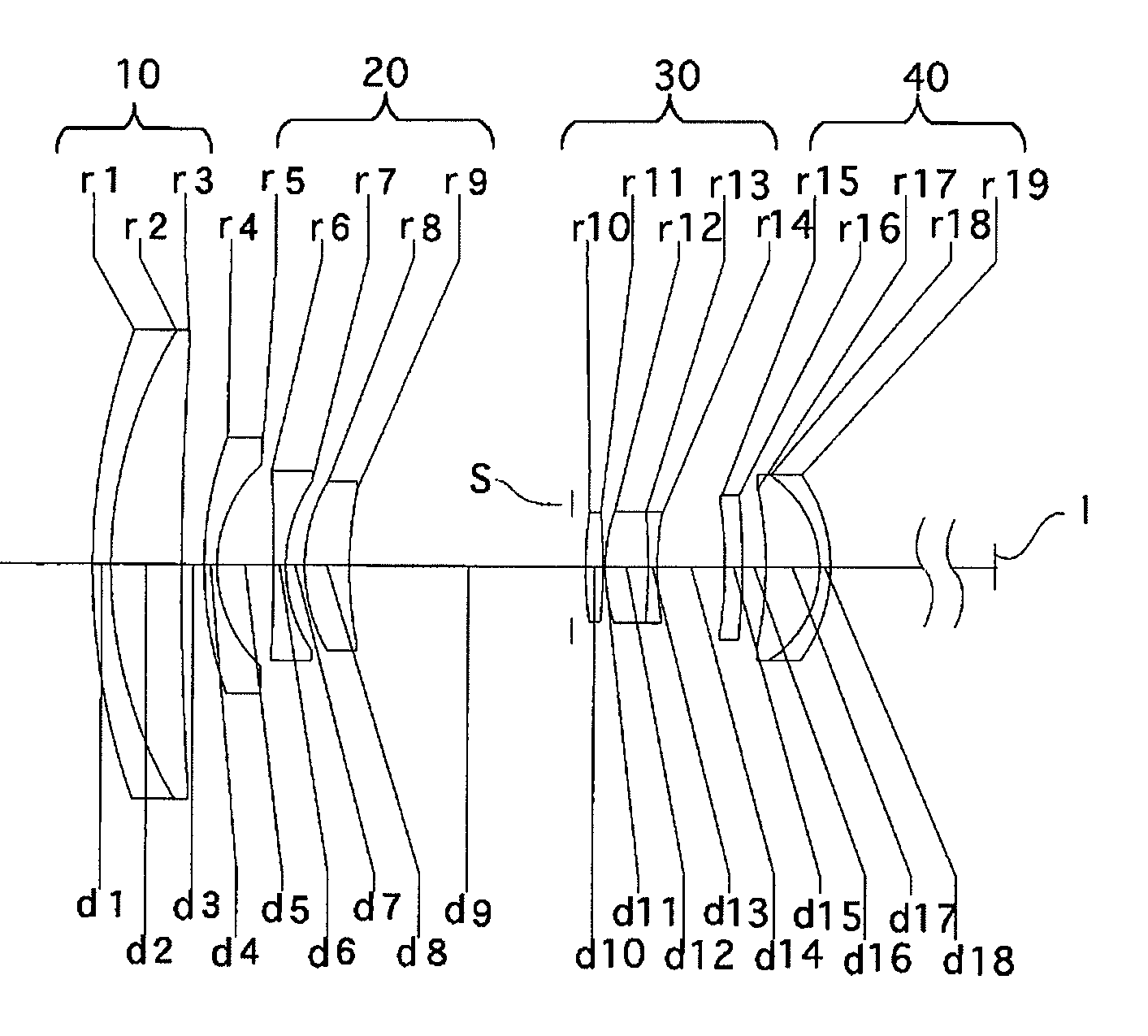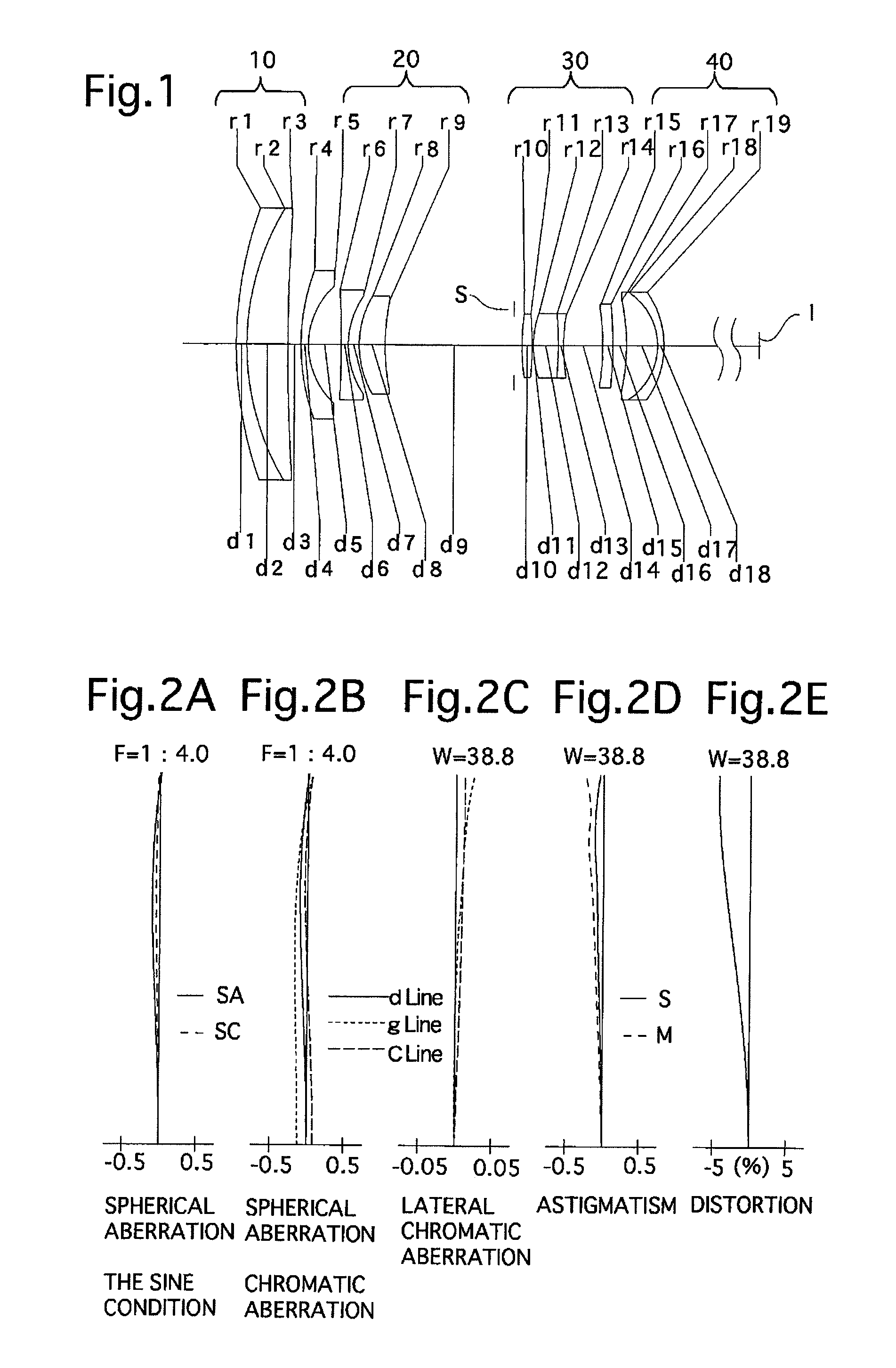Standard zoom lens system
- Summary
- Abstract
- Description
- Claims
- Application Information
AI Technical Summary
Benefits of technology
Problems solved by technology
Method used
Image
Examples
Example
Embodiment 1
[0145]FIG. 1 is a lens arrangement of the standard zoom lens system, at the short focal length extremity, according to the first embodiment of the present invention. FIGS. 2A through 2E show aberrations occurred in the lens arrangement shown in FIG. 1. FIG. 3 is a lens arrangement of the standard zoom lens system, at the long focal length extremity, according to the first embodiment of the present invention. FIGS. 4A through 4E show aberrations occurred in the lens arrangement shown in FIG. 3.
Example
[0146]The first embodiment of the standard zoom lens system includes a positive first lens group 10, a negative second lens group 20, a diaphragm S, a positive third lens group 30, and a positive fourth lens group 40, in this order from the object.
[0147]The positive first lens group 10 is constituted by cemented lens elements having negative meniscus lens element having the convex surface facing toward the object and a positive meniscus lens element having the convex surface facing toward the object, in this order from the object.
[0148]The negative second lens group 20 is constituted by a negative meniscus lens element having the convex surface facing toward the object, a bi-concave negative lens element (a negative lens element having a concave surface facing toward the image), and a positive meniscus lens element having the convex surface facing toward the object, in this order from the object.
[0149]The positive third lens group 30 is constituted by a bi-convex positive lens eleme...
Example
Embodiment 2
[0153]FIG. 5 is a lens arrangement of the standard zoom lens system, at the short focal length extremity, according to the second embodiment of the present invention. FIGS. 6A through 6E show aberrations occurred in the lens arrangement shown in FIG. 5. FIG. 7 is a lens arrangement of the standard zoom lens system, at the long focal length extremity, according to the second embodiment of the present invention. FIGS. 8A through 8E show aberrations occurred in the lens arrangement shown in FIG. 7.
PUM
 Login to View More
Login to View More Abstract
- wherein
- f1 designates the focal length of the positive first lens group;
- f2 designates the focal length of the negative second lens group; and
- f3 designates the focal length of the positive third lens group.
Description
Claims
Application Information
 Login to View More
Login to View More - R&D
- Intellectual Property
- Life Sciences
- Materials
- Tech Scout
- Unparalleled Data Quality
- Higher Quality Content
- 60% Fewer Hallucinations
Browse by: Latest US Patents, China's latest patents, Technical Efficacy Thesaurus, Application Domain, Technology Topic, Popular Technical Reports.
© 2025 PatSnap. All rights reserved.Legal|Privacy policy|Modern Slavery Act Transparency Statement|Sitemap|About US| Contact US: help@patsnap.com



